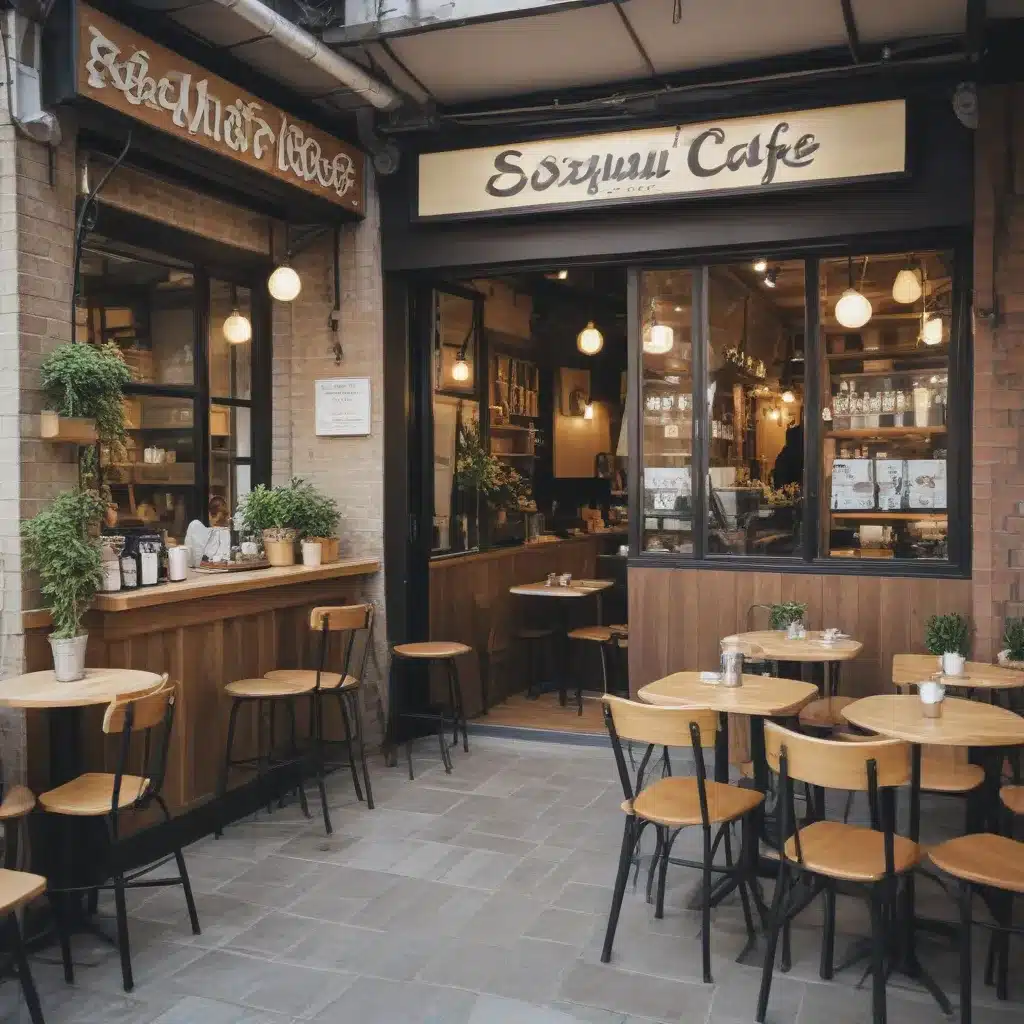
A Sip of Tradition Meets Modernity
As I step into the quaint alley of Nakseongdae, the bustling energy of Seoul’s city center fades into a tranquil respite. Here, nestled among the charming hanok (traditional Korean houses), I discover a hidden gem: Ongozisin, a cafe that seamlessly blends Korea’s rich cultural heritage with a contemporary cafe experience.
The moment I push open the wooden door, I’m transported to a world where the aroma of freshly brewed tea and the soft whispers of conversations mingle in the air. The interior is a harmonious blend of old and new – a refurbished two-story house adorned with traditional Korean pottery and wooden furnishings, yet infused with a cozy, modern ambiance.
I take a seat by the window, mesmerized by the play of light and shadow that dances across the tatami mats and bamboo accents. As I peruse the menu, I’m struck by the unique offerings that pay homage to Korea’s culinary traditions. From the signature Nurungji Jocheong latte, a delightful fusion of coffee and traditional grain syrup, to the Ongo bread, a mochi-style treat with flavors like sweet corn and green tea, I know I’m in for a true taste of Seoul’s burgeoning cafe culture.
Redefining the Coffee Experience
Ongozisin is just one example of the remarkable transformation Seoul’s cafe scene has undergone in recent years. Gone are the days when the city’s coffee culture was dominated by sleek, generic establishments. Today, a new generation of cafe owners and baristas are redefining the very concept of what a coffee shop can be.
The Korea Herald describes this shift, noting that “more cafes are creating their own unique tastes and offering a whole new cafe experience by incorporating with Korea’s traditional taste and culture.” This sentiment is echoed in the words of Cho Hee Sook, often referred to as the “Godmother of Korean cuisine,” who emphasizes the need to “update traditional Korean cuisine to reflect modern lifestyles.”
It’s a sentiment I wholeheartedly agree with, having explored the diverse array of cafes that have sprung up across Seoul. From the whimsical Coffee Hanyakbang, which transports visitors to the 1920s cafe scene, to the decadent Teddy Beurre House, where buttery croissants and rich coffee converge, each establishment offers a unique twist on the traditional cafe experience.
Blending Culinary Traditions with Innovation
One cafe that has particularly captured my attention is Evett, a Michelin-starred restaurant in the trendy Gangnam district. Here, Australian chef Joseph Lidgerwood has seamlessly blended Korea’s culinary traditions with innovative fine dining techniques.
Lidgerwood’s dishes are a testament to the remarkable ways in which Korean cuisine can be reinterpreted and elevated. Take, for instance, his Meju doughnut, a creation that pays homage to the beige brick of dried, fermented soybeans that is the foundation of many Korean staples. The doughnut itself is a delicate balance of sticky rice, caramelized cream, and a millet rice cake, all presented atop the meju brick to showcase the very essence of Korean food-making.
But Lidgerwood’s culinary prowess extends beyond just reinterpreting traditional dishes. He also showcases Korea’s bountiful natural resources, foraging for fresh ingredients across the country and preserving them through fermentation to create a “library of fermented stuff” that he can draw upon for his creations.
The Rise of Korean Haute Cuisine
Evett’s success is not an isolated incident, but rather a testament to the growing global recognition of Korean cuisine. As the NPR article highlights, two of the 12 Michelin star awards in New York last year, and three of the 19 in 2022, went to Korean restaurants – a remarkable feat that “I never thought would happen in my lifetime,” as chef Cho Hee Sook muses.
This surge in the popularity of Korean haute cuisine can be attributed to a confluence of factors, including the broader rise of Korean cultural exports, from K-pop to acclaimed films like “Parasite.” The South Korean government and corporations have also recognized the potential of Korean food to serve as a powerful ambassador for the nation’s cultural influence.
“Our ultimate goal is to increase exposure of Korean food overseas and through that increase exports of Korean agricultural and food products,” explains Yang Joo-pil, an official at the Ministry of Agriculture, Food and Rural Affairs. This strategy includes everything from product placements in K-drama to selling Korean food at overseas K-pop concerts.
Embracing the Cafe Culture Revolution
As I sip my Nurungji Jocheong latte, savoring the perfect balance of sweet and coffee, I can’t help but feel a sense of excitement for the future of Seoul’s cafe culture. This city, which has long been a global trendsetter, is now leading the charge in redefining the very essence of what a cafe can be.
Whether you’re drawn to the rustic charms of Ongozisin, the whimsical nostalgia of Coffee Hanyakbang, or the Michelin-starred excellence of Evett, there’s no denying the depth and diversity of Seoul’s burgeoning cafe scene. And as more and more of these unique establishments take root, I can’t wait to see what other delightful surprises this city has in store for caffeine aficionados like myself.
So the next time you visit Hotel Stay Inn Seoul, be sure to venture beyond the city’s bustling streets and immerse yourself in the captivating world of Seoul’s cafe culture. It’s a journey that will tantalize your taste buds, delight your senses, and leave you with a newfound appreciation for the art of blending tradition and modernity.

